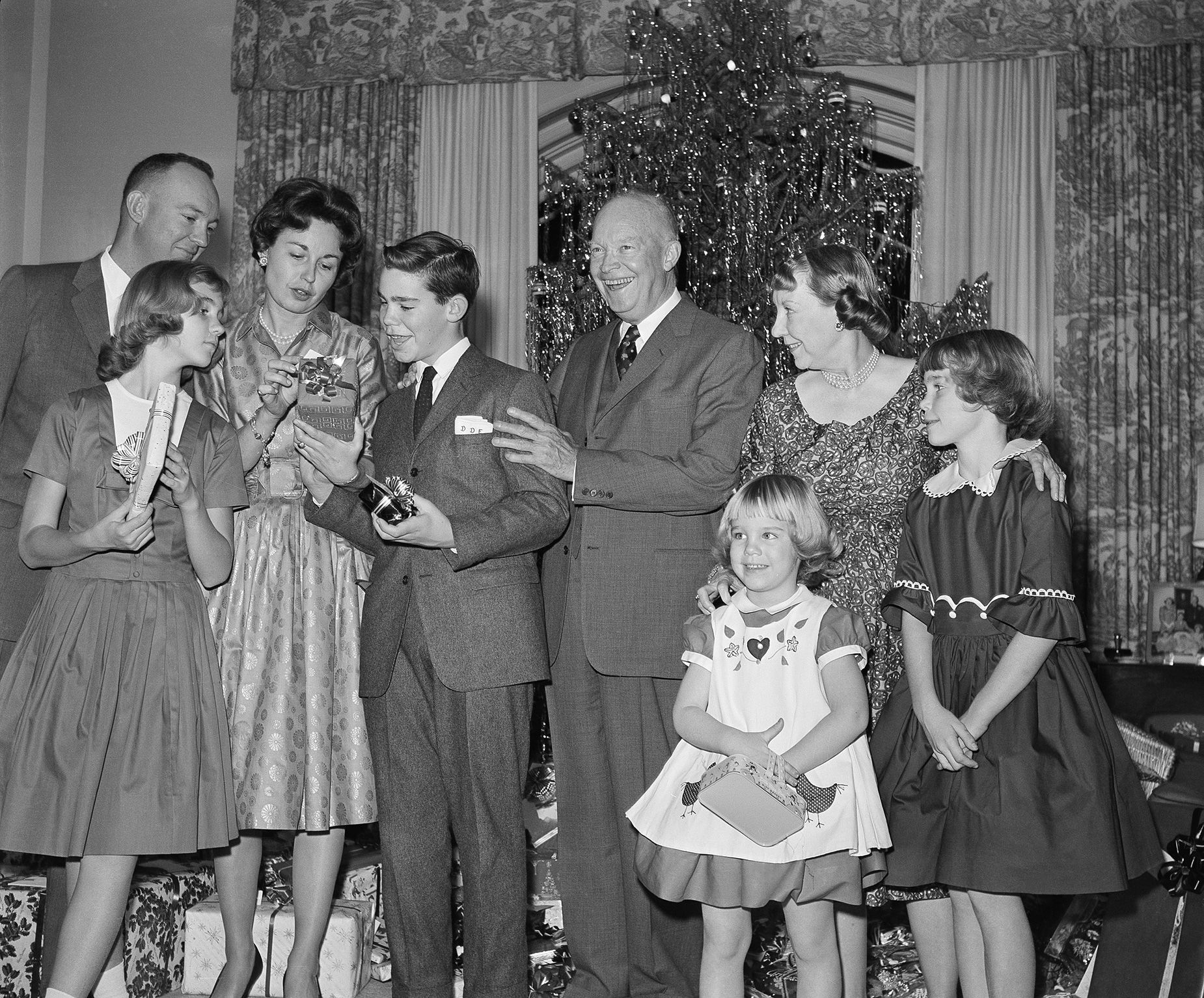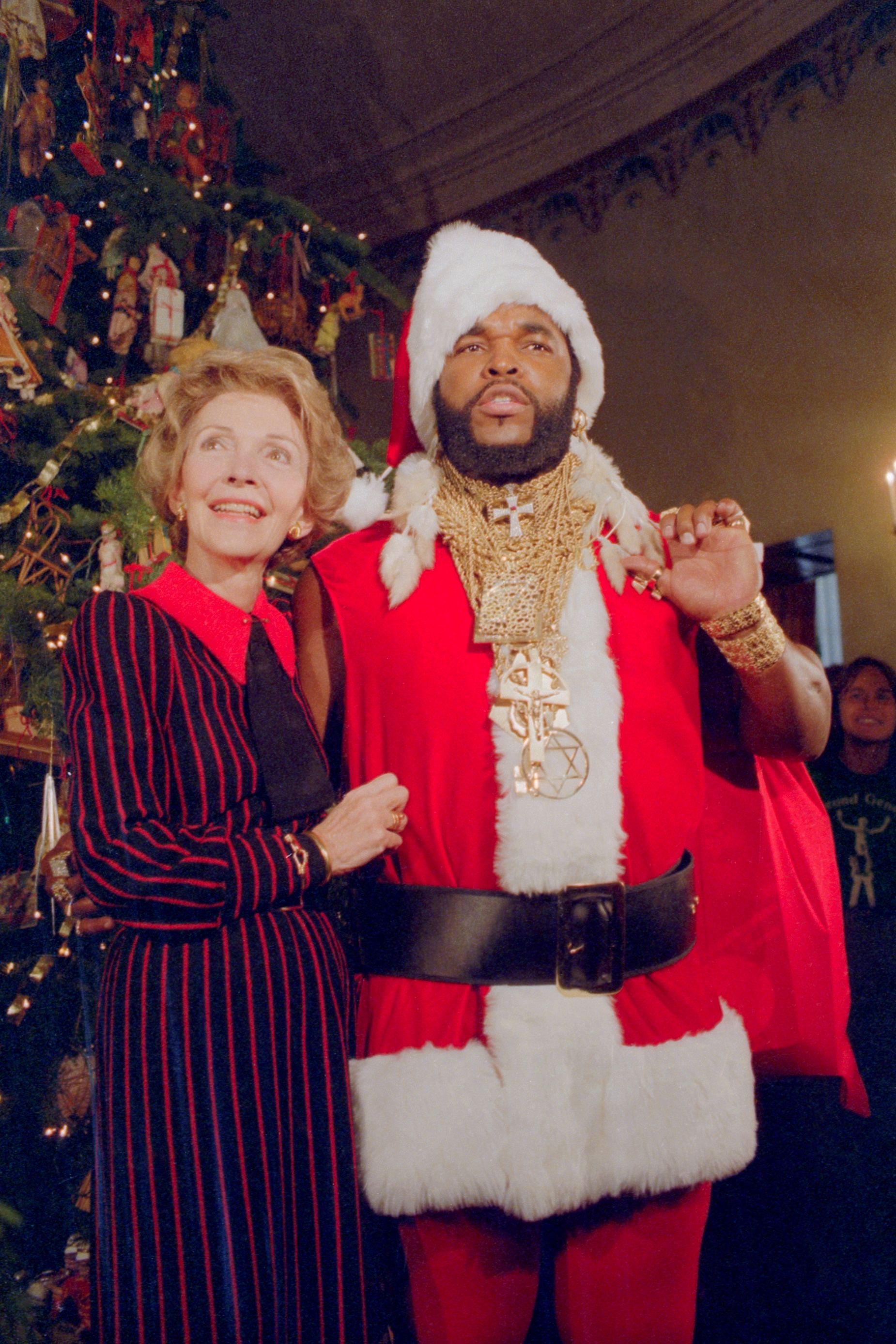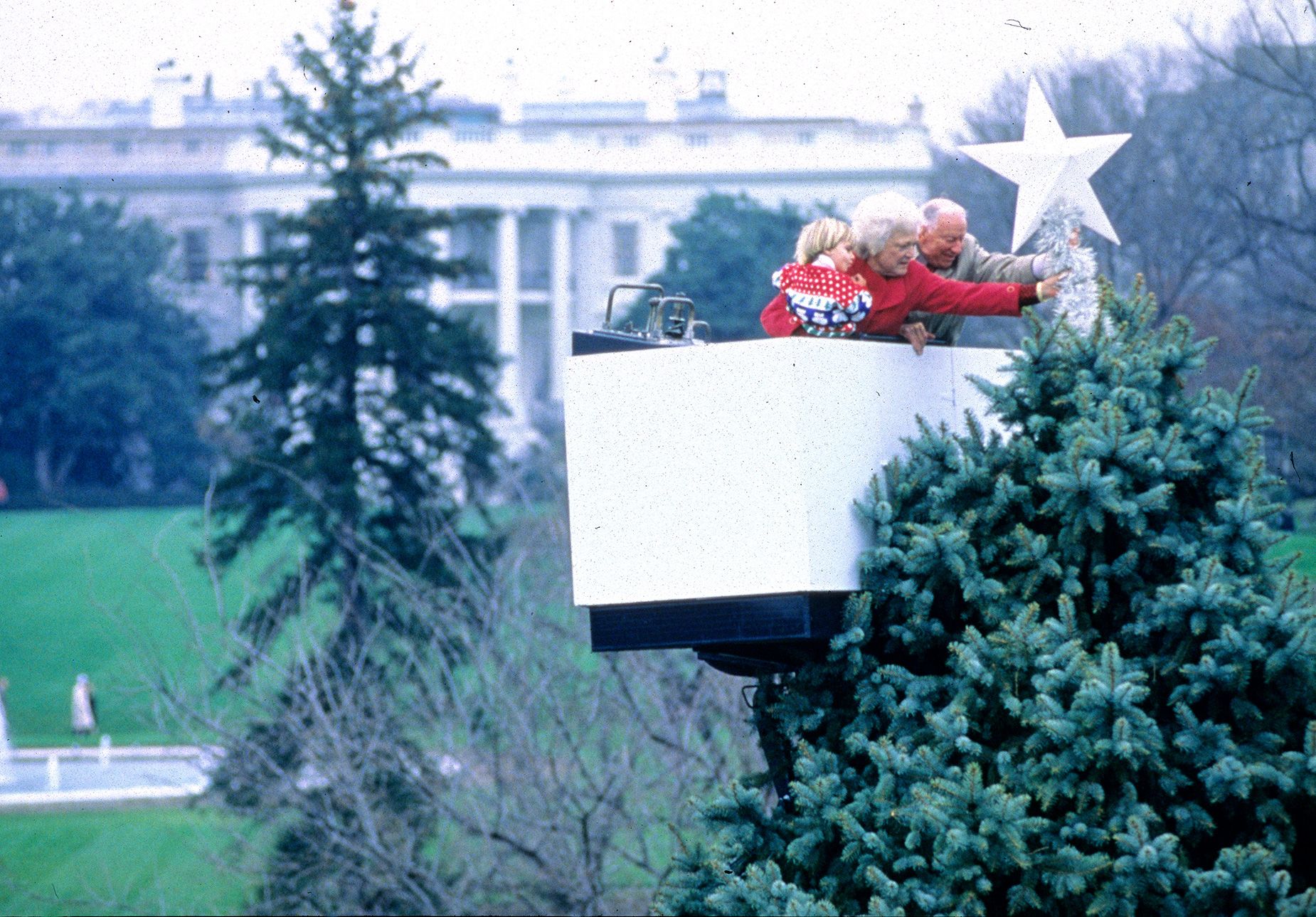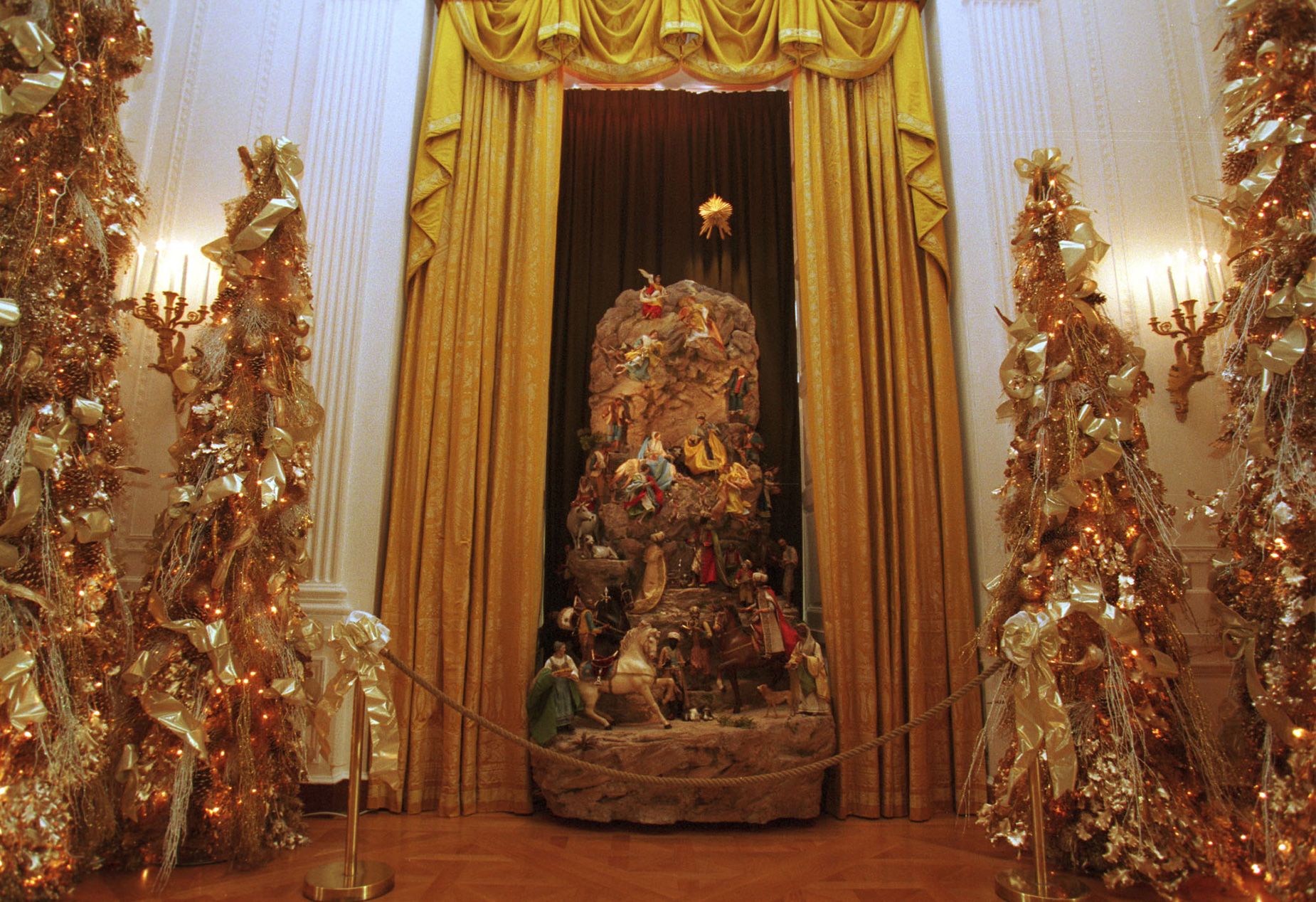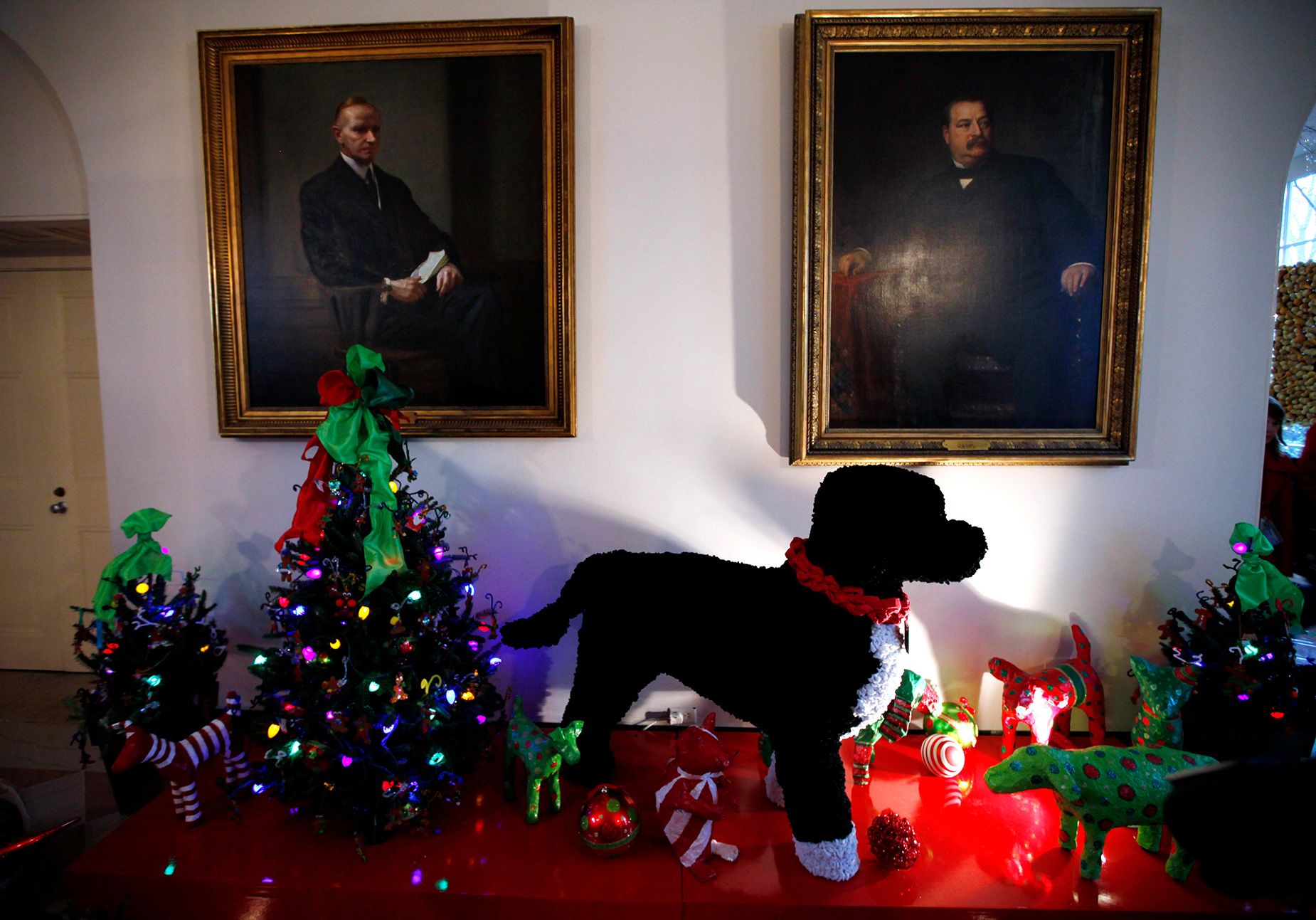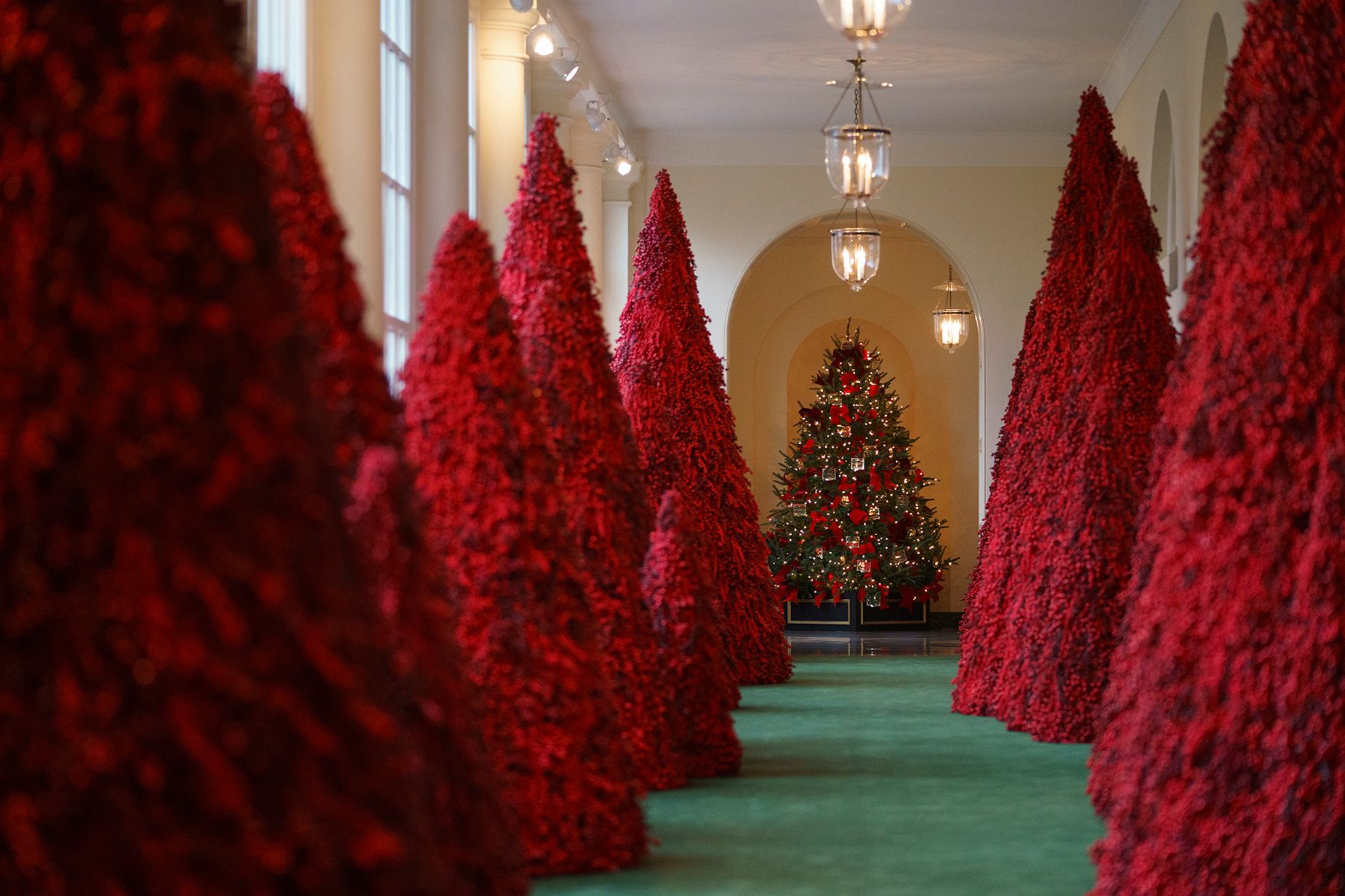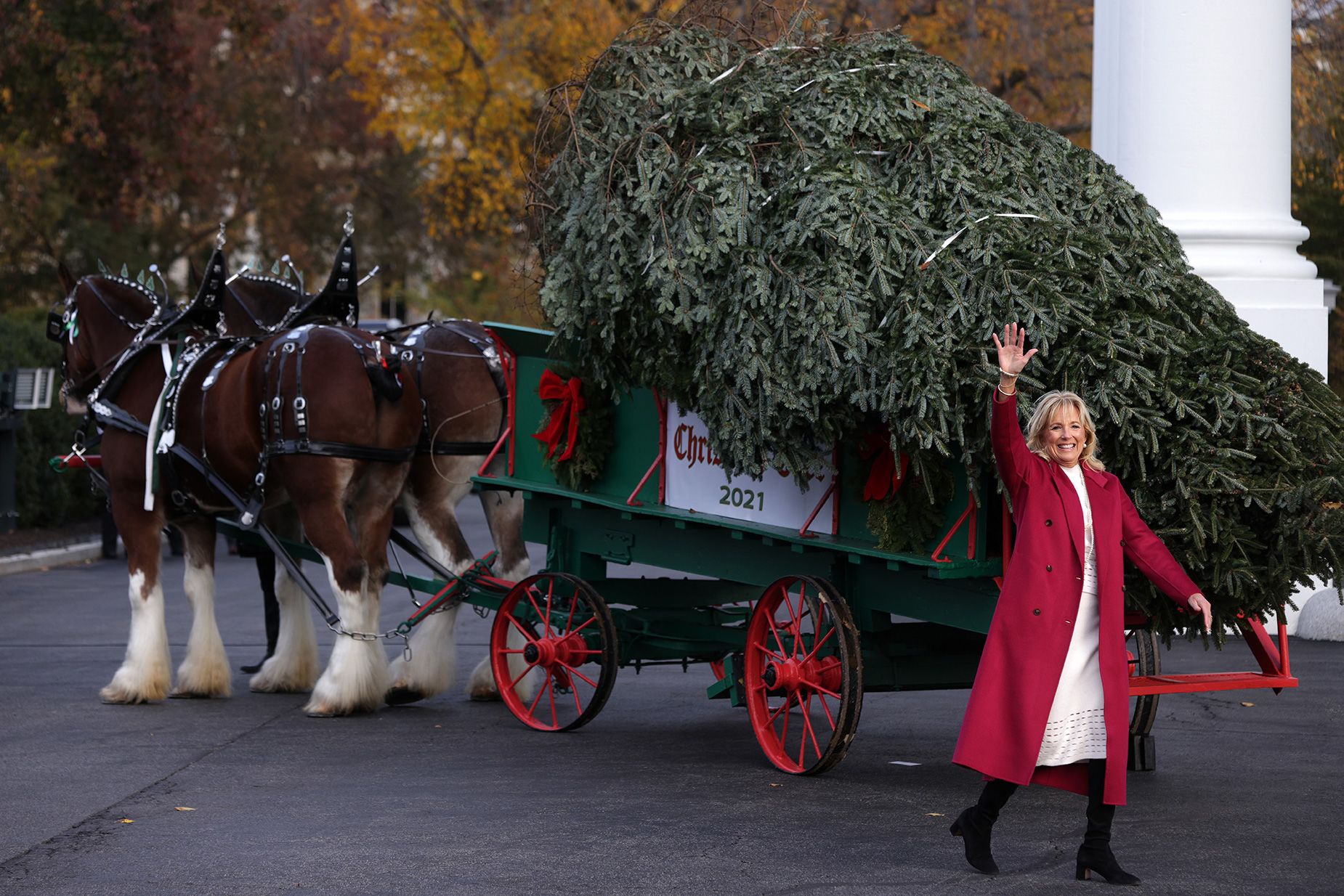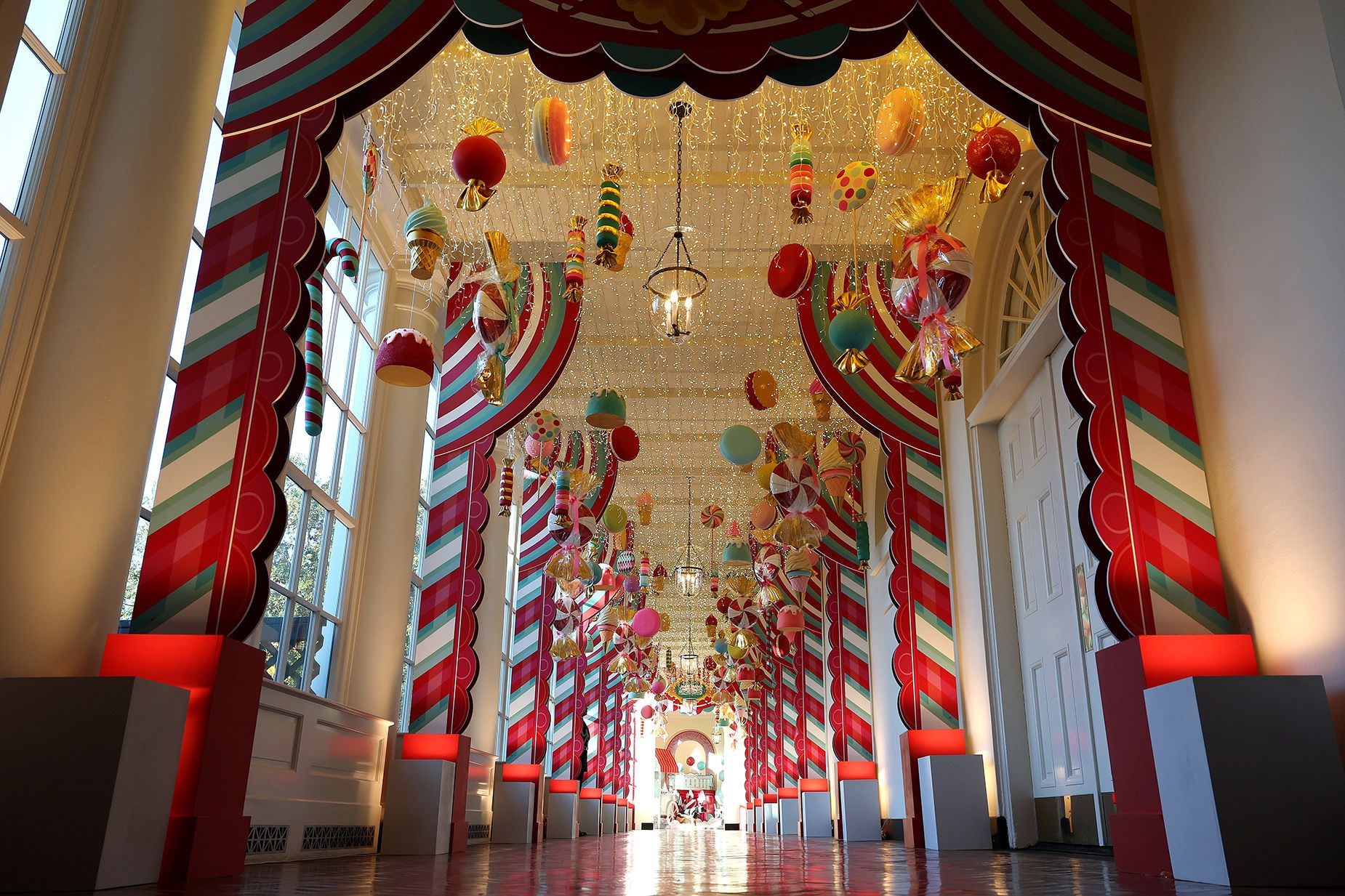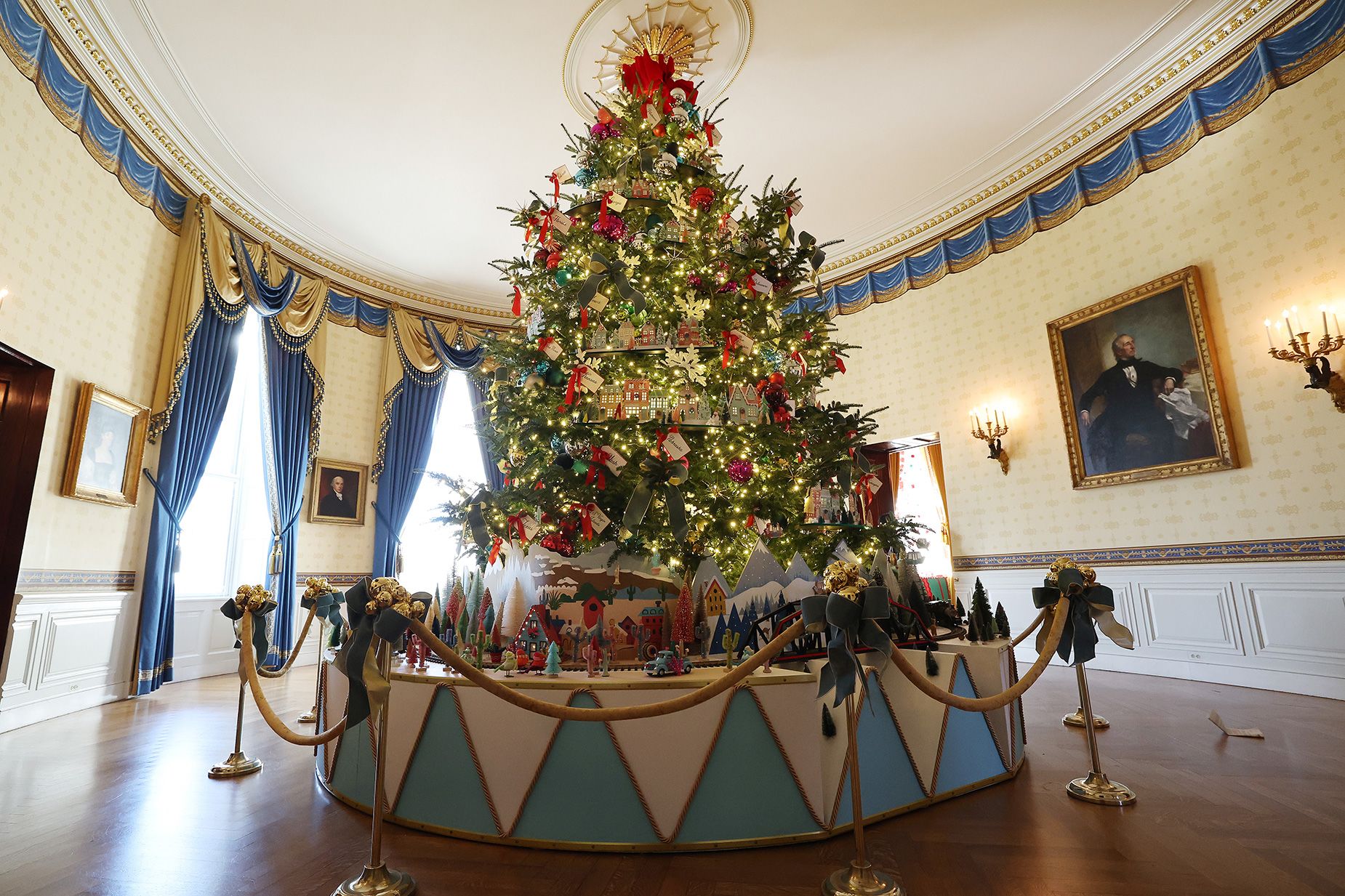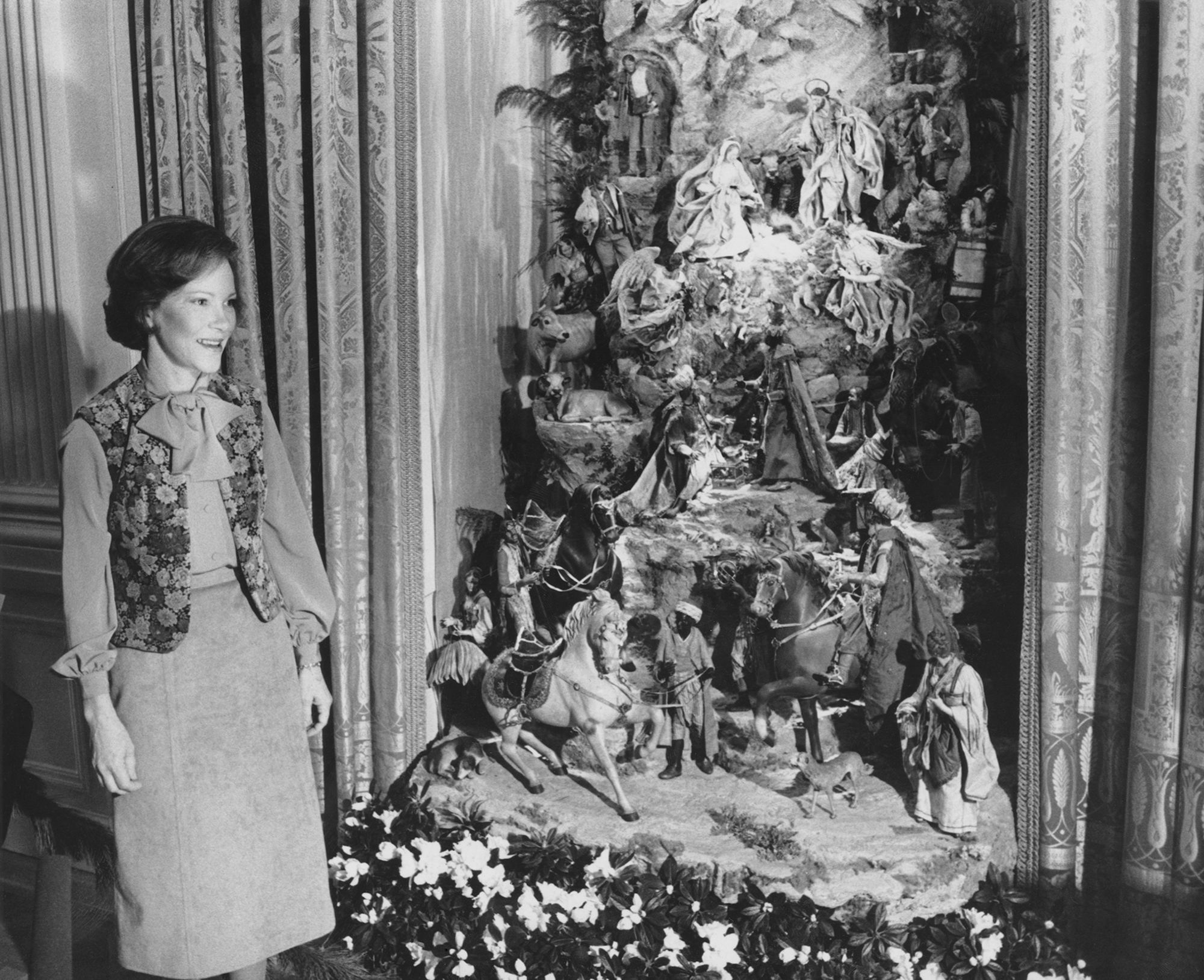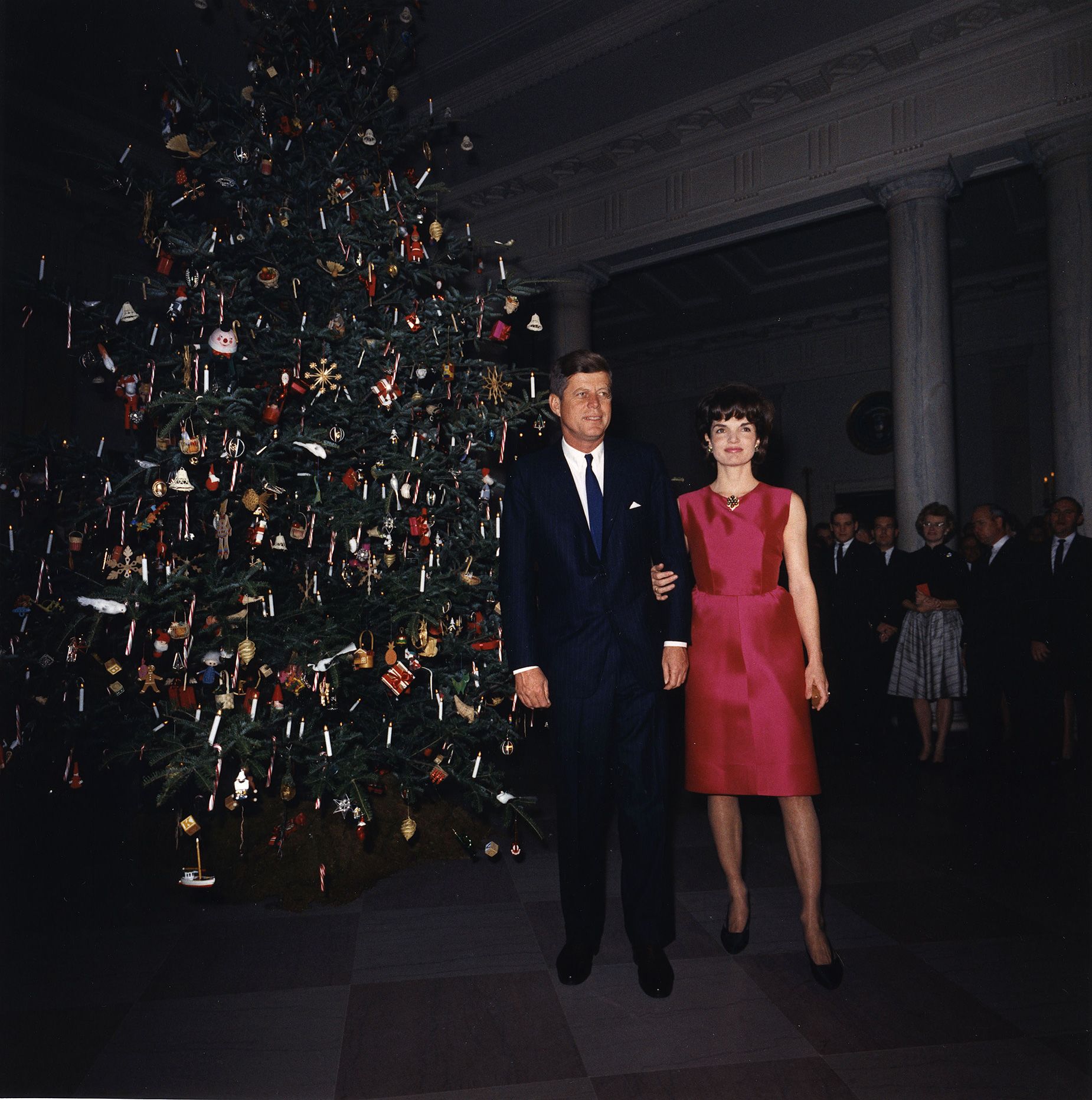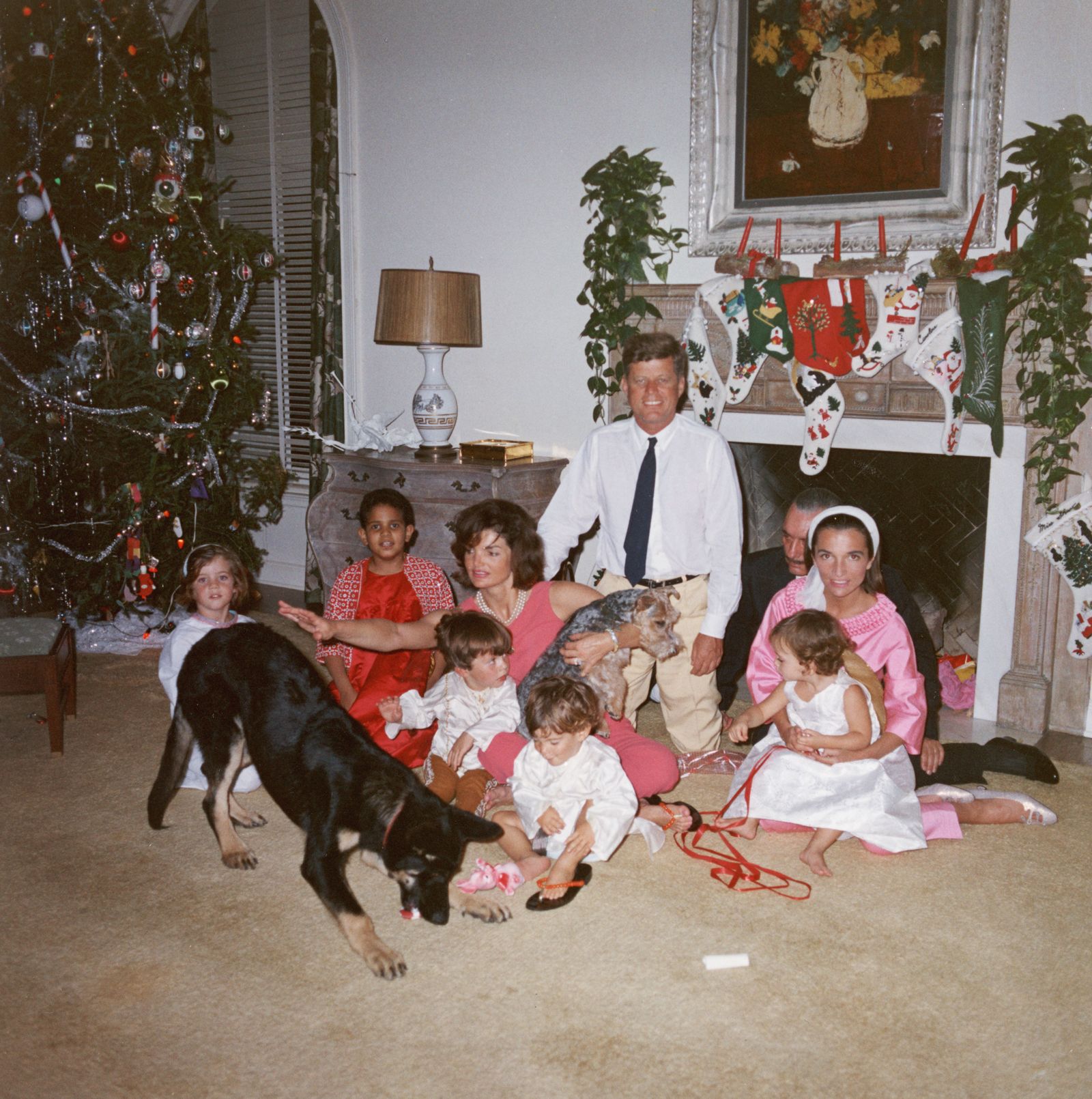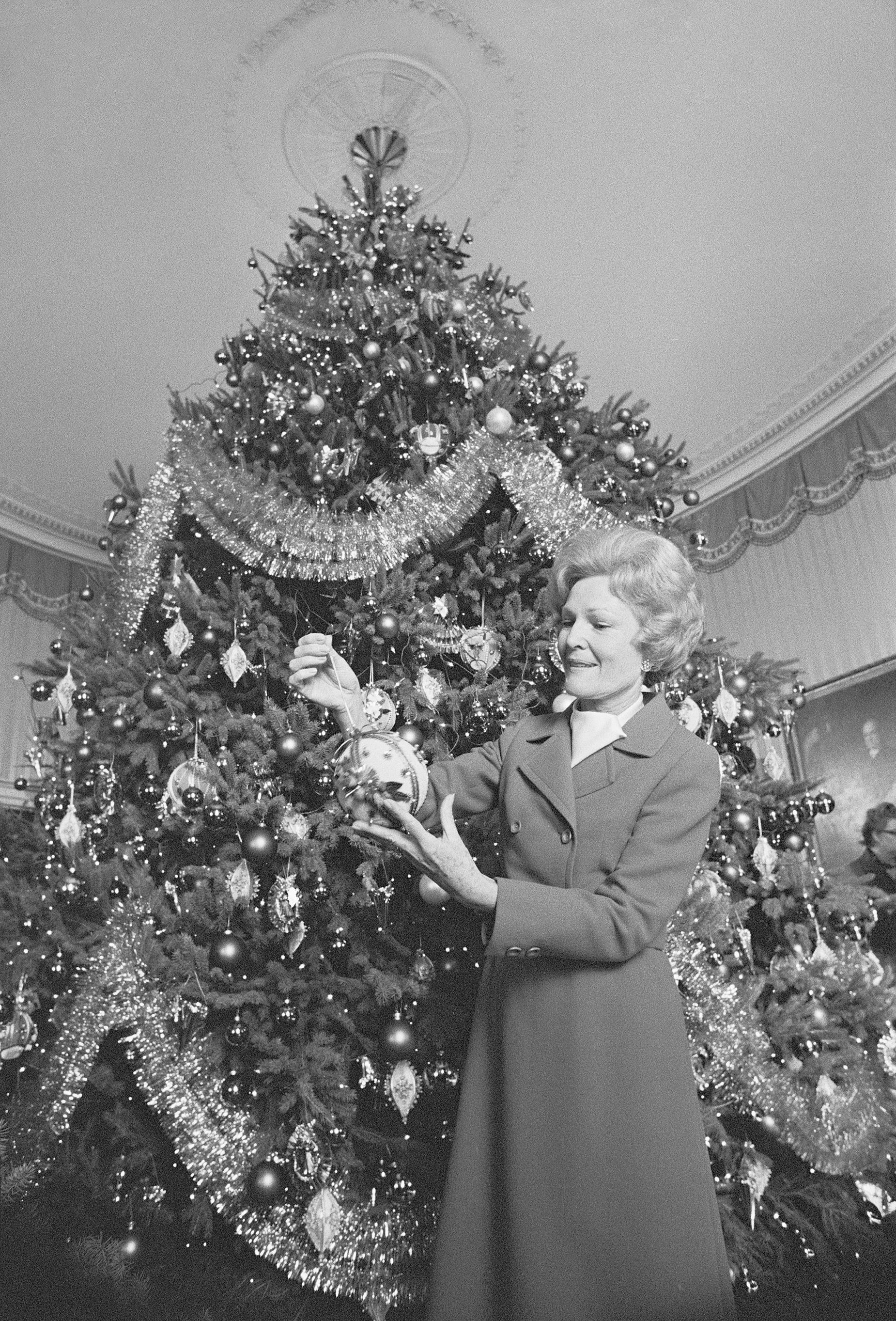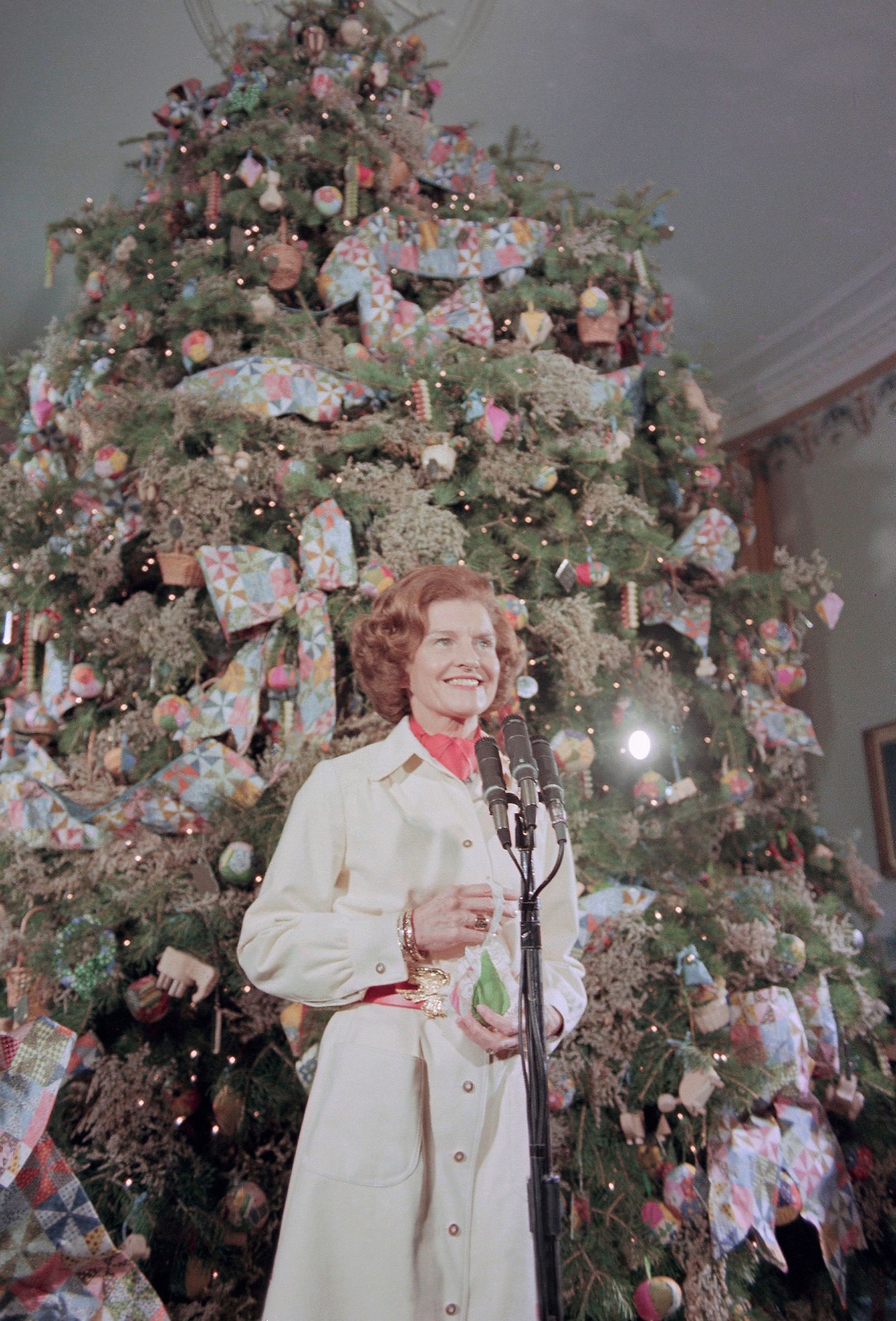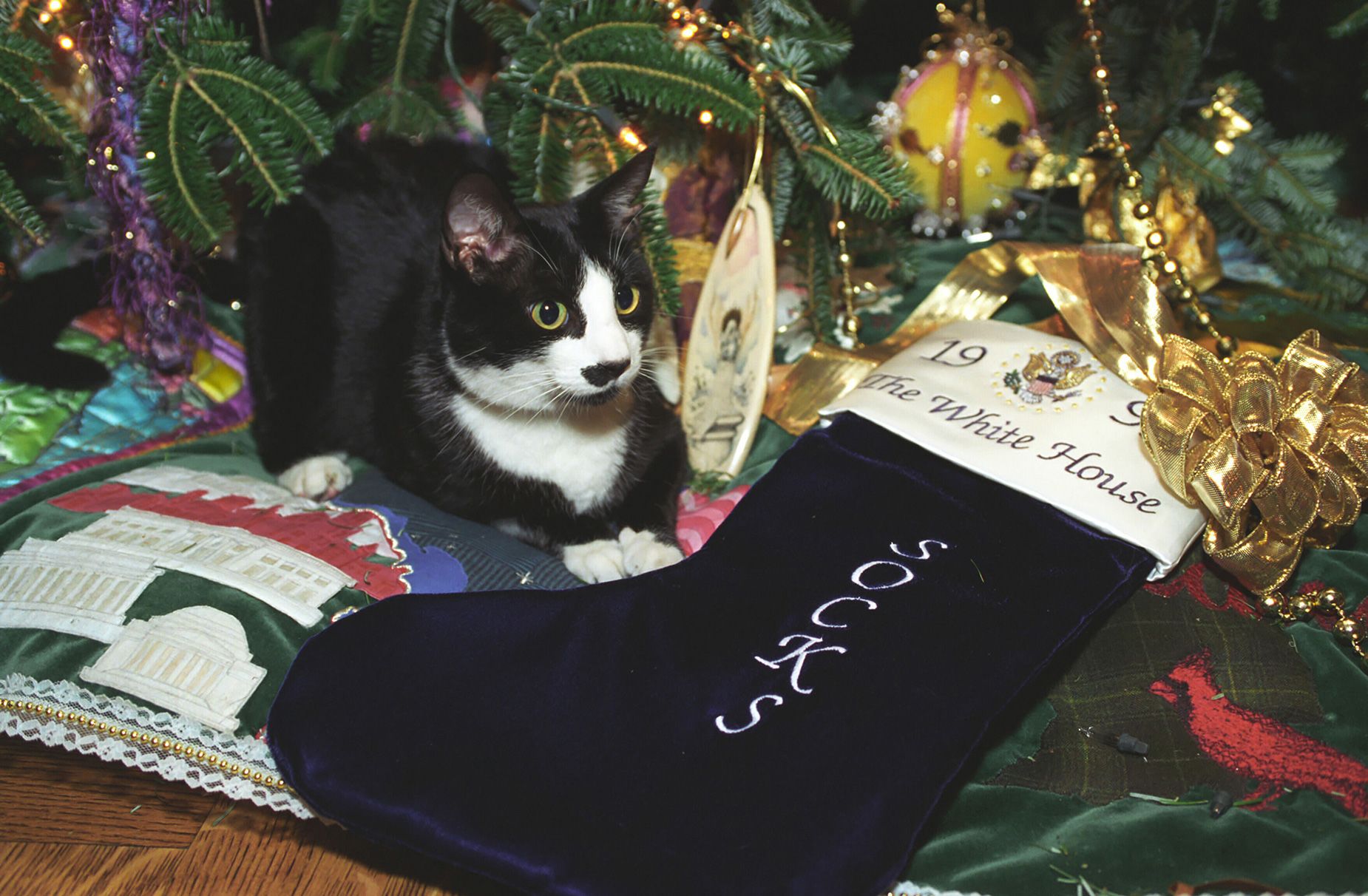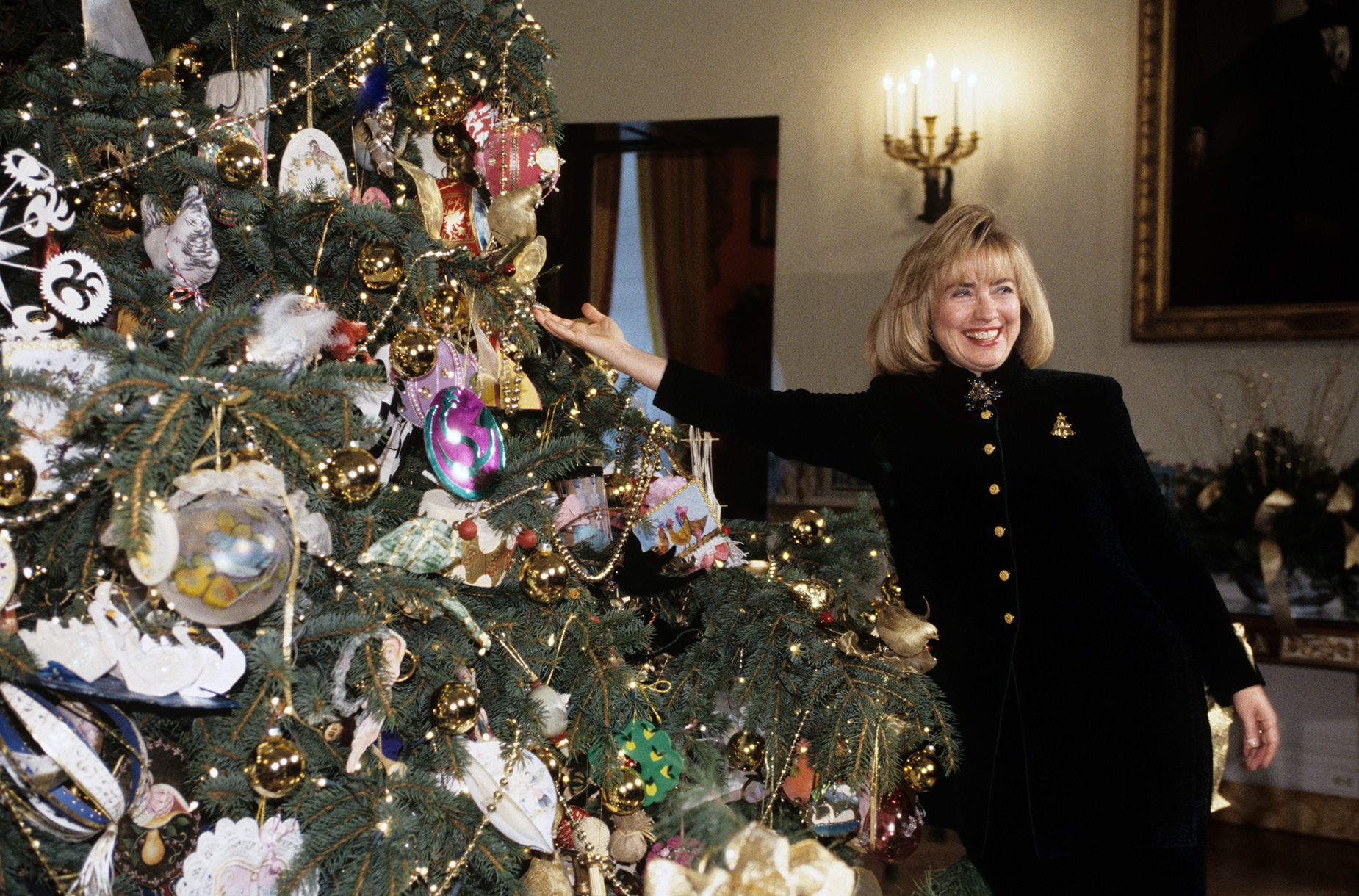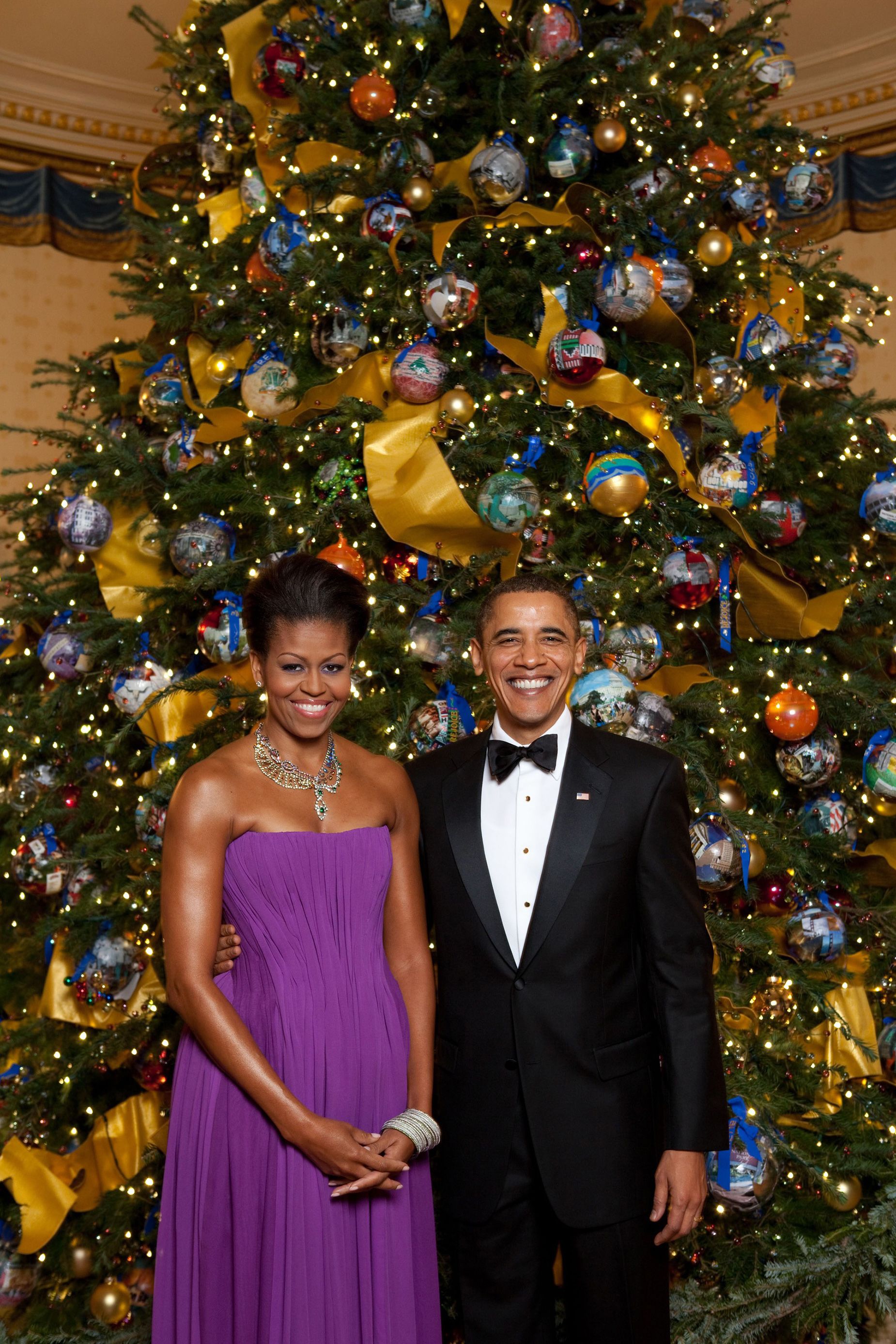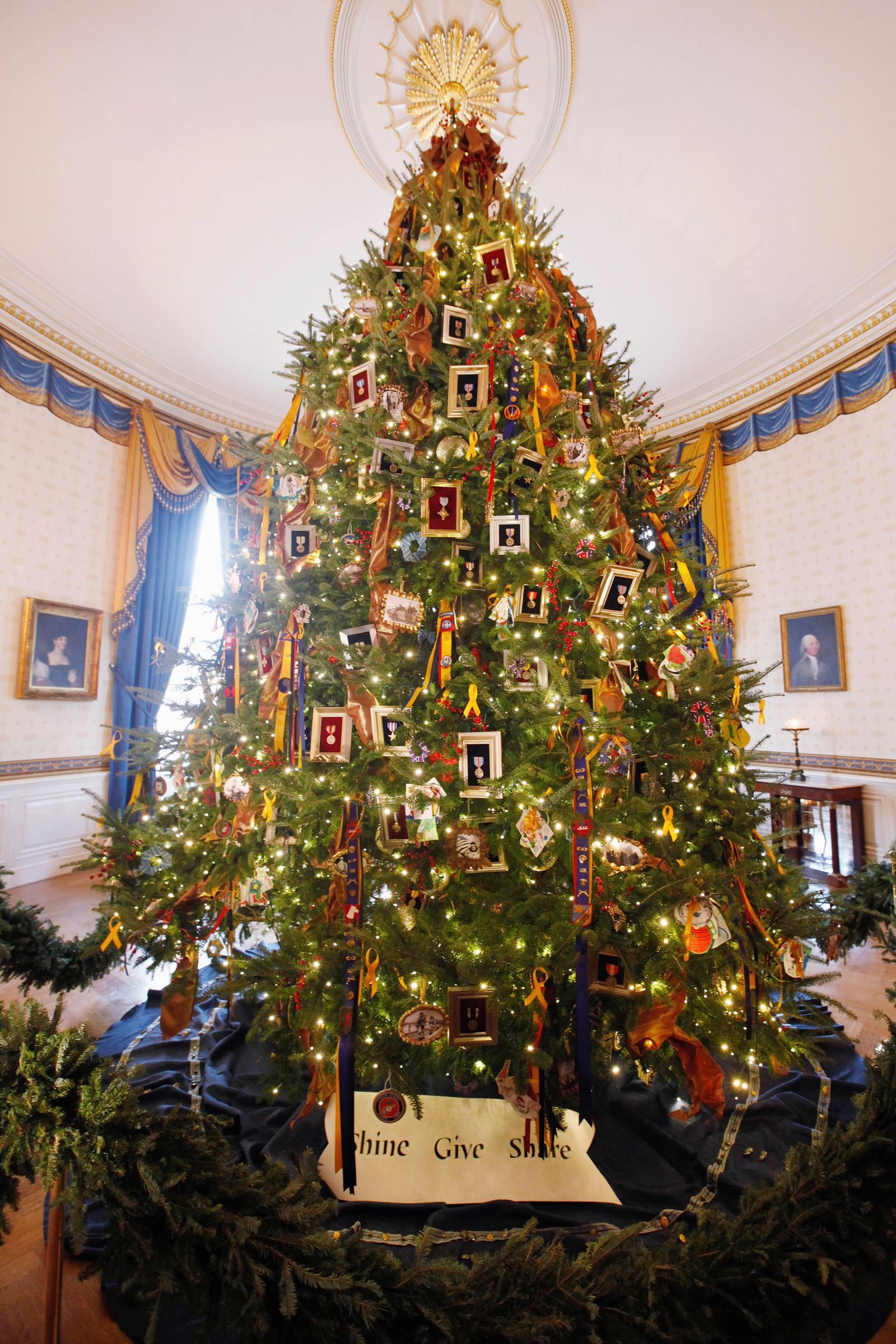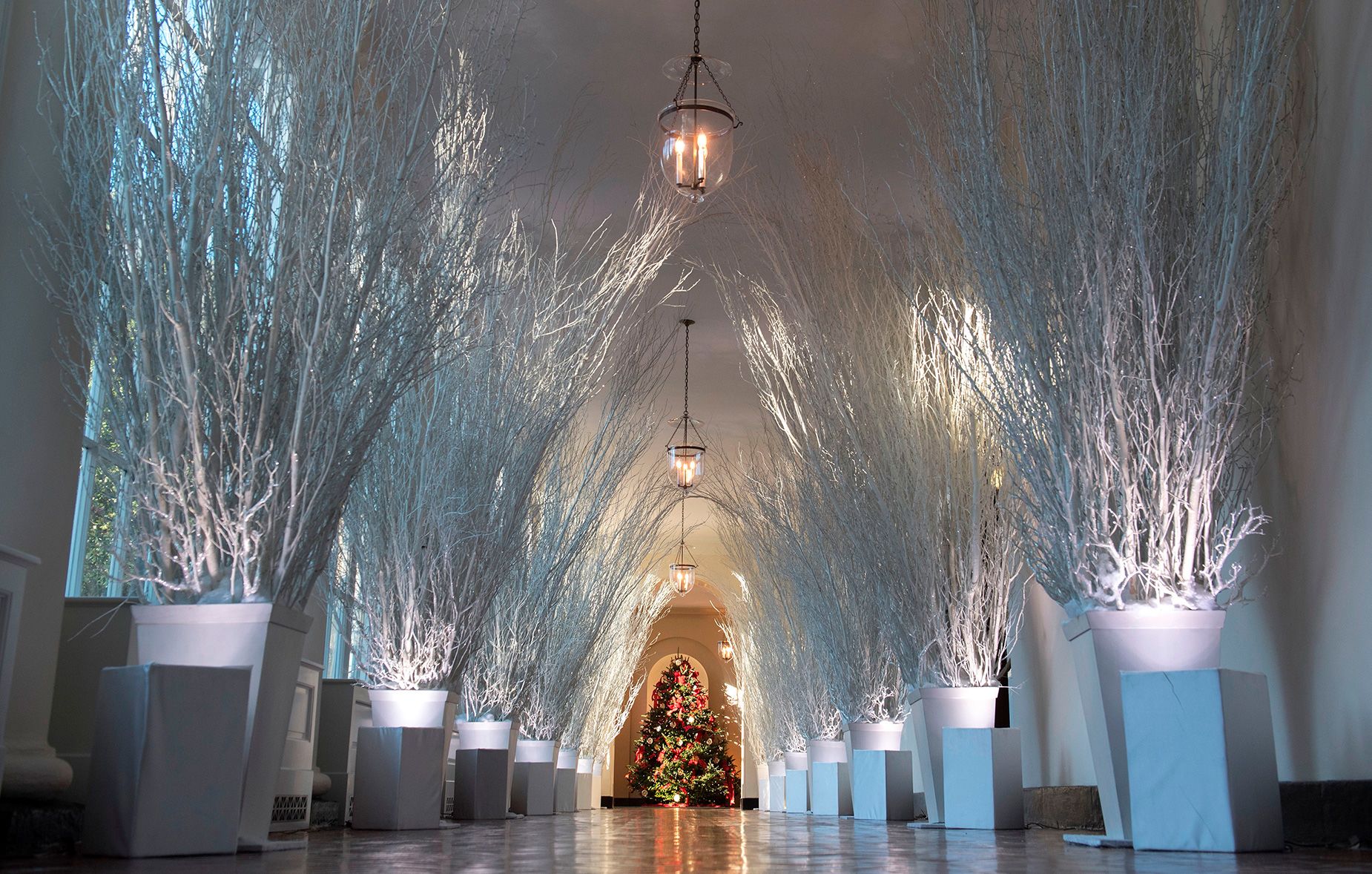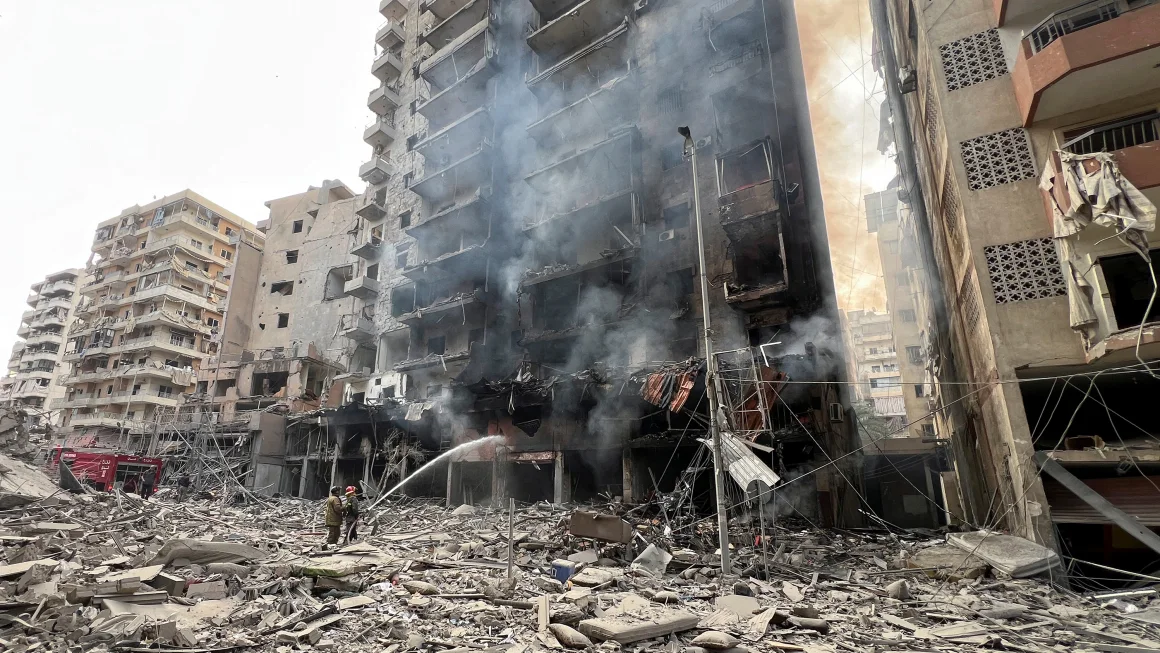Since holiday-obsessed Mamie Eisenhower ramped up presidential Christmas decorations in the 1950s, first ladies have become the keepers of increasingly elaborate holiday decor traditions, and their sensibilities applauded or scrutinized. With new conventions added by different administrations — themes were first introduced by Jacqueline Kennedy, elaborate gingerbread White Houses by Patricia Nixon, and Red Room cranberry trees by Betty Ford — planning has become an intricate, months-long process between the first lady and a team of designers, and requires hundreds of volunteers to execute.
For this season, first lady Dr. Jill Biden revealed whimsical interiors on Monday on the theme “Magic, Wonder, and Joy,” with the hope that Americans “will embrace your inner child and delight in simply being present with those you love,” as she wrote in the annual White House Holiday Guide.
Reindeer arc high in the air in Grand Foyer, while in the East Wing Lobby and East Colonnade, oversized candies and fairy lights hang from the ceilings. In all, there are 98 Christmas trees spread throughout the White House — including the official 18.5-foot tree in the Blue Room — along with nearly 34,000 ornaments, and over 142,000 holiday lights on the premises, according to the White House. And, after last year’s historic debut, the White House’s Hanukkah menorah will also be on display — the first to be commissioned by the executive residence and enter its permanent collection, rather than be temporarily loaned.
“We typically do see Christmas decor and holiday decor at the White House becoming grander over time,” said Sarah Fling, a historian with the White House Historical Association, in a video call. “It’s expected now that first ladies have something that’s different, that’s fun, that’s engaging, that’s beautiful to look at.”
Seasonal symbolism
Christmas trees have made an annual appearance at the White House for 134 years, with the very first one decked out in candles and toys (before the arrival of electricity to the building). But, as Fling explained, first ladies have always taken charge of decorations, and their role has expanded as Christmas has become more commercialized.
Former first lady Kennedy’s inaugural “Nutcracker Suite” theme became so popular it has since been revived by other administrations, including by Barbara Bush and Hillary Clinton. Others have been more patriotic (Trump’s “America the Beautiful,” her final — and less controversial — spin on Christmas), or playful (Laura Bush’s “All Creatures Great and Small,” which included papier-mâché and marzipan Presidential pets). During periods of economic uncertainty, some first ladies have pulled back on extravagance, with Ford opting for homemade designs in 1974, and Obama sending out hundreds of recycled ornaments for local communities to decorate in 2009.
The decor can also point to larger projects that first ladies are working on, Fling explained.
“A lot of first ladies will shape the decorations around their initiatives,” she said. “So in that capacity, it’s really a means for them to share the causes that are important to them.” Nancy Reagan invited teens from a substance rehabilitation program to create ornaments in the “Just Say No” era, for example, while Obama asked military families to contribute cards and ornaments after launching her “Joining Forces” initiative to support service members.
But as the Internet has given greater access to the White House’s holiday themed interiors, opinions and misinformation can multiply. Trump’s much-talked about “blood trees” in 2018 were called “creepy” (her no-show at the press tour also raised eyebrows), while false claims quickly circulated in 2013 that Obama was erecting “holiday” trees in an effort to ban the word “Christmas” — a sign of Starbucks cup controversies to come.
This year, the White House expects that around 100,000 visitors will come tour the “Magic, Wonder, and Joy” decorations in person. Below, see photographs of how first ladies have transformed the White House over the decades.
